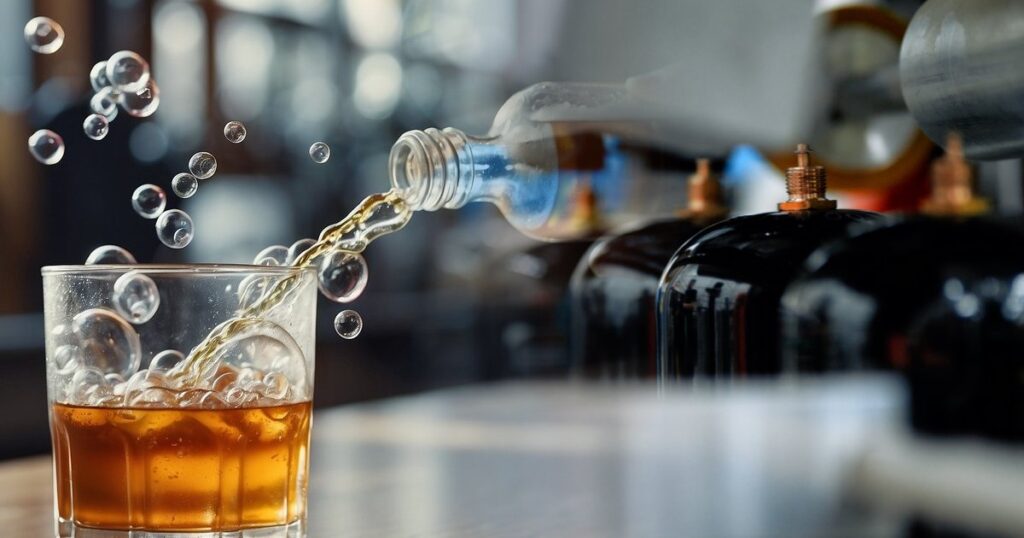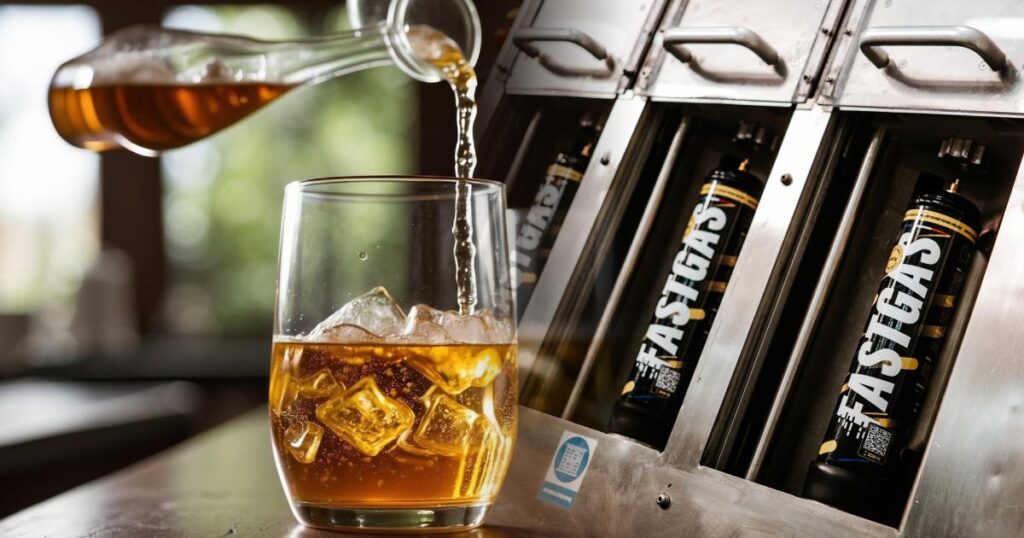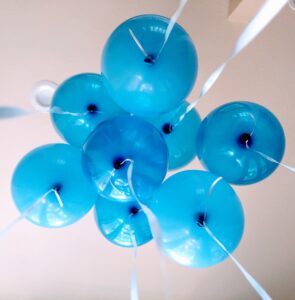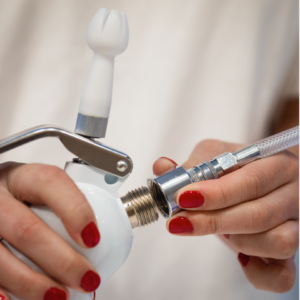DIY Carbonation: Mastering Homemade Fizzy Beverages
FastGas Blog
Creating carbonated water at home has become an enjoyable DIY project for beverage enthusiasts seeking a personalised drinking experience. The allure of making your soda, seltzer, or sparkling water offers the satisfaction of crafting customised drinks. It provides a more cost-effective and eco-friendly option than buying pre-carbonated beverages. Initiating your home carbonation system involves understanding the essential components and methods of carbonation, allowing you to enjoy that fizzy sensation right from the comfort of your kitchen.
With the right equipment, such as a FastGas CO2 cylinder, you can set up a reliable home carbonating system that fits your preferences. Whether you prefer lightly sparkling drinks or are full of vigour, the ability to control the level of carbonation is one of the critical benefits of DIY carbonation. Home carbonation is not limited to water; with some creativity, you can venture into carbonating various beverages, from homemade sodas to sparkling teas.
Key Takeaways
- DIY carbonation allows personalised beverage creation at home.
- FastGas CO2 cylinders are essential for setting up a home carbonation system.
- Carbonation levels can be tailored for drinks ranging from water to sodas.
Essentials of DIY Carbonation
Creating carbonated water at home with a DIY carbonation system offers a customisable and economical way to enjoy your favourite fizz. You can effortlessly make carbonated water at home by understanding the essential components, choosing the right equipment, and following safety guidelines.
Understanding Carbonation
Carbonation dissolves carbon dioxide (CO2) gas into a liquid under pressure. For home carbonating, you require CO2 since it’s the only gas that’s safe, tasteless, and soluble enough to create the desired effect. CO2 forms carbonic acid when dissolved, giving carbonated water a distinctive taste.
Choosing Your Equipment
To start home carbonating, you need a few essential pieces of equipment:
- CO2 Tank: A 5 lb CO2 tank is typically sufficient for home use and can carbonate many gallons of water.
- Pressure Regulator: This device attaches to the CO2 tank and allows you to control the amount of gas flow, measured in psi (pounds per square inch).
- Carbonation Cap: This unique cap fits onto standard plastic bottles and connects to your system via a hose.
- Ball Lock: This valve connects the regulator to the carbonation cap through the tubing, creating a seal to maintain pressure.
- Bottle: Any standard plastic bottle can become a carbonation vessel; just ensure it’s strong enough to withstand the pressure.
Here’s a simple table to help visualise the recommended setup for a home carbonation system:
| Equipment | Purpose | Notes |
| 5 lb CO2 Tank | Stores CO2 for carbonation | Refillable at many homebrew shops |
| Pressure Regulator | Controls CO2 flow and pressure | Necessary for adjusting carbonation levels |
| Carbonation Cap | Allows connection of CO2 to the bottle | Must fit standard plastic bottle threading |
| Ball Lock | Connects regulator hose to carbonation cap | Ensures a tight seal for maintaining pressure |
| Plastic Bottles | The vessel for carbonating | Must be pressure-rated |
Safety Considerations
When working with a home carbonation system, safety is paramount:
- Check your Pressure: Regularly monitor the gauge on your pressure regulator; a pressure of 30-40 psi is commonly used to create moderately fizzy carbonated water at home.
- Inspect Equipment: Before use, inspect your hose, tubing, and plastic bottle for signs of wear.
- Secure the CO2 Tank: Always ensure your CO2 tank is secured upright to prevent it from falling over and becoming a hazard.
- Avoid Over-Pressurizing: Never exceed the recommended pressure for the bottle, as over-pressurizing can cause the bottle to burst.
Following these essentials will help you achieve high-quality carbonation safely and effectively in your home carbonation endeavours.
Creating Your Carbonated Drinks
Home carbonating allows you to enjoy fresh carbonated water at home and tailor beverages to your taste. Mastering DIY carbonation can elevate your home beverage experience from fizzy water to creative cocktails.
Carbonating Water and Beverages
A SodaStream or similar soda machine can quickly and efficiently carbonate cold water, allowing you to make carbonated water at home. If you’re adventurous, employing a DIY home carbonation system with FastGas CO2 cylinders can offer a more hands-on approach. Ensure the cold liquid is filled to the appropriate level before carbonation.
- For SodaStream:
- Fill the bottle with cold water.
- Attach to the machine and carbonate.
- For FastGas CO2 cylinders:
- Connect the cylinder to your rig according to the manufacturer’s instructions.
- Carbonate the cold liquid as desired.
Adding Flavors and Ingredients
Once you’ve carbonated your base liquid, adding flavourings is where creativity comes in. You can concoct unique drinks- fruit juice, flavour, or herbs.
- Simple Syrups and Extracts: Add these to your carbonated water to create custom sodas.
- Juice or Tea: Combine with carbonated water for a refreshing alternative.
- Cocktails and Sparkling Wine: Use your soda siphon or machine to add bubbles to your favourite alcoholic drinks.
Experiment with combinations until you find your perfect match.
Cleaning and Maintenance
Keeping your home carbonation system clean is crucial for functionality and longevity.
- Disassemble your device as per the manufacturer’s instructions.
- Clean each part with warm, soapy water, and rinse thoroughly.
- Allow all components to air dry before reassembling.
- Regularly inspect for wear and tear, especially the seals and CO2 connectors.
By following these guidelines, you can create a delightful range of carbonated beverages right from the comfort of your home.
Frequently Asked Questions
Creating fizzy beverages in the comfort of your home is more straightforward than you might expect. Below are detailed responses to some of the most common queries about home carbonation.
What are the steps to create a homemade carbonation system for sparkling water?
To make carbonated water at home, you need a CO2 source, a regulator, a carbonation bottle or keg, and a connection hose. Start by chilling your water, attaching the hose from the regulator to the gas cylinder and the other end to your bottle or keg, pressurising the water with CO2, and then enjoying your sparkling water.
Can I carbonate water at home using a CO2 tank, and if so, how?
Yes, you can use a CO2 tank to carbonate water at home. Securely connect your CO2 tank to a regulator, adjust the pressure to your desired level—usually between 30-50 psi—and connect it to a bottle with chilled water. The CO2 will dissolve into the water, creating a bubbly effect.
What is the best home carbonation system currently available on the market?
The best home carbonation system depends on your personal preferences and needs. Some systems use small proprietary CO2 canisters, while others employ refillable CO2 tanks that can offer a more cost-effective and versatile solution.
Is it possible to make naturally carbonated beverages without using a machine, and how?
Yes, it’s possible to create naturally carbonated beverages using fermentation. By combining sugar and yeast in a beverage like fruit juice or ginger bug, the yeast converts the sugar into alcohol and carbon dioxide, naturally carbonating your drink.
How can you carbonate water for a DIY soda at home without a commercial carbonator?
For a simple DIY carbonated drink, you can use a DIY carbonation system with a seltzer bottle equipped with a CO2 charger. Alternatively, you can create a simple rig using a plastic bottle, some tubing, and a tire valve to pressure carbonate your soda.
Can baking soda make drinks fizzy, and what is the process?
While not as effective as CO2 cylinders, baking soda can make drinks fizzy. Mix your drink with a small amount of acid, like lemon juice or vinegar, and quickly add baking soda. It reacts with the acid, producing carbon dioxide, which carbonates your drink. However, this method may affect the flavour of your beverage.




